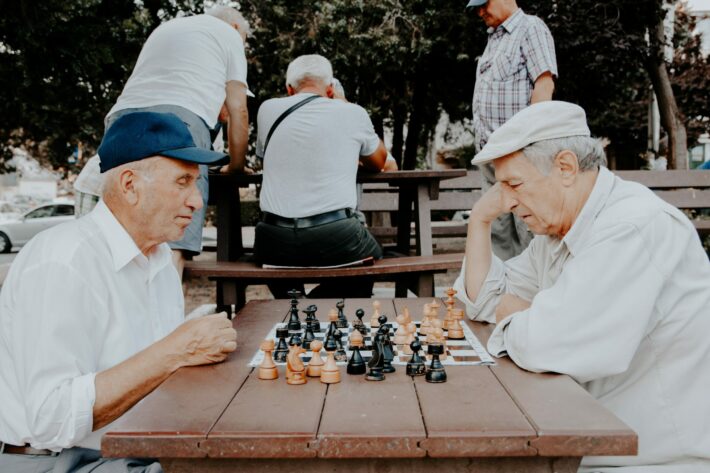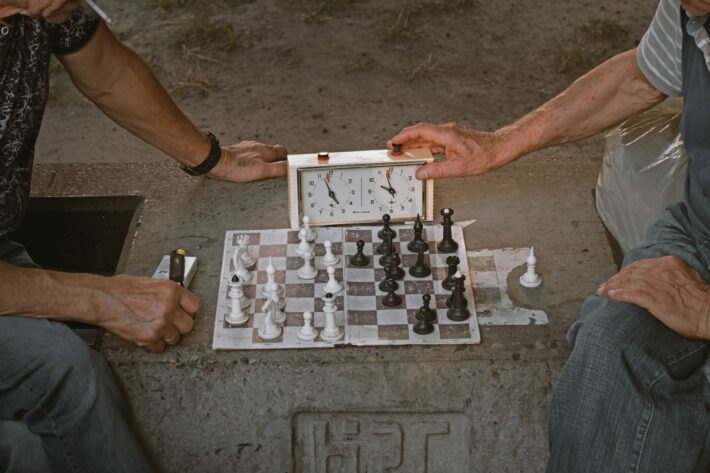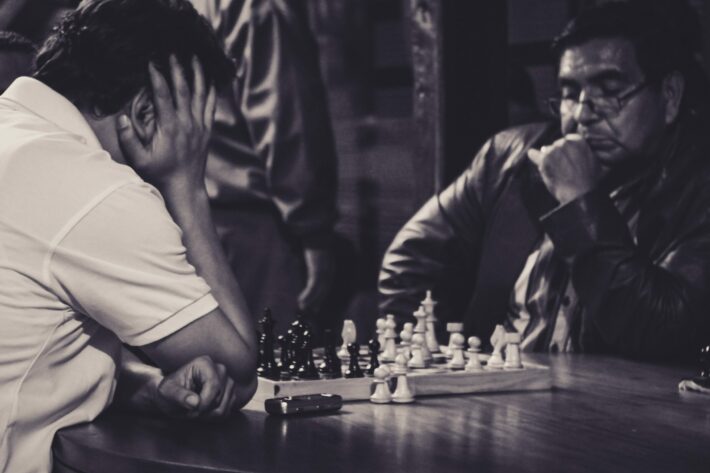In the complex world of chess strategy, one move can make all the difference. Among the arsenal of tactical maneuvers, castling stands out as a game-changer. Whether you’re a novice seeking to enhance your skills or a seasoned player aiming to outwit your opponents, understanding the intricacies of castling is essential.
This article delves into the rules, benefits, and strategic nuances of this formidable chess move. From the basics to advanced techniques, we provide a comprehensive guide to help you unleash the power of castling and gain a competitive edge on the chessboard. Get ready to elevate your game and conquer your adversaries with the art of castling.
What are the benefits of mastering castling in chess?
Mastering castling in chess brings a multitude of benefits to players. Firstly, it helps in safeguarding the king by moving it to a safer position, reducing vulnerability to attacks. Additionally, castling enables players to connect their rooks, allowing for better coordination and a more aggressive offense.
By castling, players can also quickly develop their pieces, freeing up the center pawns for potential expansion. Moreover, castling provides a foundation for launching counterattacks and maintaining a solid defense. It’s a strategic move that bolsters a player’s position and sets the stage for future tactical maneuvers.
How does castling contribute to a player’s strategy in chess?

Castling plays a crucial role in a player’s overall strategy in chess. It helps to accomplish several strategic objectives. Firstly, castling allows the king to find a safer haven, tucked away behind a wall of pawns and a rook. This creates a fortified position, reducing the chances of a quick checkmate and providing a foundation for launching attacks.
Additionally, castling facilitates the connection of rooks, enabling them to work together and exert pressure on the opponent’s position. It also allows for a smoother transition from the opening to the middle game, ensuring better piece development and enhancing the overall harmony of a player’s position.
What are the rules and requirements for executing a successful castle in chess?
To execute a successful castle in chess, players must adhere to certain rules and requirements. Firstly, neither the king nor the rook involved in the castle can have moved previously. The squares between the king and the rook should be unoccupied, and there should be no threats to the king’s safety.
Importantly, the king cannot be in check, move through a square that is attacked, or end up in check as a result of castling. The castle can be executed by moving the king two squares towards the rook and then placing the rook on the adjacent square. Following these rules ensures a legal and effective castle in chess.
Why is castling considered an essential move in chess?
Castling is considered an essential move in chess due to its numerous advantages. Firstly, it helps in safeguarding the king, which is crucial for maintaining a strong defensive position. Castling provides a safe haven for the king, reducing its vulnerability to attacks and potential checkmates.
Additionally, castling allows for the activation of the rook, bringing it into play and improving overall piece coordination. It also helps in the transition from the opening to the middle game by connecting the rooks and preparing for potential tactical strikes. Overall, castling is a fundamental move that enhances a player’s strategic position and protects their king.
What are some advanced techniques and variations of castling in chess?
While the basic concept of castling remains the same, there are a few advanced techniques and variations that players can employ. One such variation is known as “queenside castling,” where the king is moved towards the queenside of the board. This involves a longer move for the king but can provide strategic advantages in certain positions.
Another technique is “delayed castling,” where a player postpones castling to maintain flexibility and react to the opponent’s moves. Additionally, castling can be combined with other tactical maneuvers, such as pawn storms or piece sacrifices, to create unexpected attacks. Exploring these advanced techniques adds depth to a player’s chess repertoire.
How can beginners practice and improve their castling skills in chess?
For beginners looking to practice and improve their castling skills in chess, several steps can be taken. Firstly, it is essential to thoroughly understand the rules and requirements of castling. Familiarize yourself with the conditions that must be met and the potential risks involved. Next, practice visualizing and planning castling in various scenarios. This helps develop an intuitive sense of when and how to execute the move effectively.
Solving chess puzzles or studying annotated games can provide valuable insights into strategic castling opportunities. Finally, playing practice games and seeking feedback from more experienced players or coaches can further refine castling techniques and enhance overall gameplay.
This table provides beginners with valuable insights on various methods they can utilize to practice and enhance their castling skills in chess.
| Practice Method | Description | Benefits |
|---|---|---|
| Chess Puzzles | Solve chess puzzles that involve castling scenarios. These puzzles test your ability to identify the right moment to castle and assess the resulting position. | Improves tactical awareness, pattern recognition, and decision-making skills. |
| Annotated Game Analysis | Study annotated games where castling played a significant role. Analyze the moves, strategies, and positional considerations involved in successful castling. | Develops an understanding of castling concepts, positioning, and its impact on overall gameplay. |
| Simulated Game Practice | Play practice games against computer opponents or fellow chess enthusiasts, focusing on incorporating castling into your strategy. | Offers practical experience in executing castling and dealing with different positions, piece placements, and opponent tactics. |
| Chess Tutorials and Videos | Explore online tutorials and instructional videos specifically dedicated to castling techniques. Learn from experienced players and chess experts. | Gains insights into castling strategies, tips, and variations, enhancing overall understanding and skill development. |
| Coaching and Mentorship | Seek guidance from experienced chess coaches or mentors who can provide personalized instruction, feedback, and targeted exercises to improve castling proficiency. | Receive individualized guidance, address specific weaknesses, and accelerate skill development through expert guidance. |
What are the potential risks and drawbacks of castling in chess?
While castling offers several benefits, there are also potential risks and drawbacks to consider. One risk is that the squares around the king after castling may become weak points that the opponent can exploit. The opponent might launch pawn storms or direct attacks to undermine the king’s safety.
Additionally, castling can delay the mobilization of other pieces, particularly if the player focuses too much on a premature or unnecessary castle. It is crucial to assess the position carefully before castling, considering the opponent’s potential threats and evaluating the safety of the king’s new position. Being aware of these risks helps players make informed decisions and develop appropriate countermeasures.
When is the ideal time to consider castling during a chess game?
The ideal time to consider castling during a chess game varies depending on the specific position and the overall strategic plan. In general, it is advisable to prioritize king’s safety and execute castling early to secure the king’s position.
As a rule of thumb, castling should be considered once the player has developed a few key pieces, cleared the center pawns, and secured control over crucial squares. However, there may be situations where delaying or postponing castling can be strategically advantageous.
This could involve maintaining flexibility, evaluating potential threats, and adapting the decision based on the evolving game dynamics. The timing of castling requires careful assessment of the position and an understanding of the overall strategic goals.
How does castling affect the positioning and safety of the king and rook?
Castling significantly affects the positioning and safety of both the king and rook. The king’s safety is enhanced by moving it to a secure position, typically behind a wall of pawns and a rook. This offers protection against potential attacks and allows the king to stay relatively sheltered. Simultaneously, the rook’s positioning is improved by connecting it with the king. This facilitates better piece coordination and strategic possibilities, such as launching attacks or defending critical areas.
Additionally, castling often leads to a rearrangement of pawn structure, influencing the overall dynamics of the game. The interplay between the king and rook positions is crucial in determining the effectiveness of castling as a defensive and strategic move.
What are the different types of castling moves available in chess?

In chess, there are two primary types of castling moves: kingside castling and queenside castling. Kingside castling involves the king moving two squares toward the rook on its original square, while the rook jumps over the king to the adjacent square. This is the more common type of castling, providing a shorter and quicker maneuver.
Queenside castling, on the other hand, involves the king moving two squares toward the queenside and the rook leaping over the king to the adjacent square. This maneuver requires more moves but can offer different strategic advantages, such as increased control over the center. The choice between kingside and queenside castling depends on the specific position and game dynamics.
What strategies can be employed to defend against an opponent’s castling?
Defending against an opponent’s castling requires careful consideration of the position and potential threats. One strategy is to create pressure on the opponent’s pieces, making it challenging for them to find the necessary time and resources to execute castling. By launching aggressive attacks or implementing tactical maneuvers, players can disrupt the opponent’s plans and force them to prioritize defense over castling.
Another approach is to control the squares around the opponent’s king, limiting the potential safety of their castled position. By establishing a strong presence and launching well-timed counterattacks, players can exploit weaknesses in the opponent’s position and undermine their castling attempts. It’s essential to balance defensive measures with maintaining one’s own strategic development.
Are there any specific opening moves or positions that facilitate successful castling?
Yes, certain opening moves or positions can facilitate successful castling. In many popular chess openings, players aim to develop their pieces efficiently while paving the way for a safe and timely castling. Opening moves that involve pawn advances, such as 1.e4 or 1.d4, often create space for the king and facilitate future castling.
Openings like the Italian Game or the Queen’s Gambit often prioritize quick king-side castling. Additionally, positions with solid pawn structures and well-coordinated piece development provide a more secure environment for castling.
By following established opening principles and considering the specific characteristics of the position, players can lay the groundwork for successful castling in the early stages of the game.
How does castling impact the overall dynamics and tempo of a chess game?
Castling has a significant impact on the overall dynamics and tempo of a chess game. It can influence the balance between offense and defense, shifting the focus from mere piece development to strategic positioning. Castling often marks the transition from the opening to the middle game, where players seek to consolidate their positions and prepare for future maneuvers.
The act of castling can also create imbalances in pawn structure, affecting the types of pawn breaks and positional strategies available to both players. Moreover, castling can alter the psychological aspect of the game, influencing each player’s perception of safety, initiative, and potential threats. It’s a pivotal move that sets the stage for subsequent tactical and strategic decisions.
Can castling be used as a tactical maneuver to gain an advantage in chess?
Yes, castling can be used as a tactical maneuver to gain an advantage in chess. By castling, players often create opportunities for subsequent tactical strikes or positional advantages. For example, after castling, the rook is better positioned to participate in attacking or defensive operations, contributing to tactical combinations or threats.
Castling can also enable players to centralize their pieces or reposition their pawns for better control of key squares, setting the stage for tactical breakthroughs or positional dominance.
Additionally, castling can confuse opponents or create unexpected tactical possibilities, leveraging the element of surprise. By combining castling with other tactical ideas, players can seize the initiative and gain a strategic edge.
What are some famous chess games that showcase the strategic use of castling?

Several famous chess games showcase the strategic use of castling. One notable example is the “Immortal Game” played between Adolf Anderssen and Lionel Kieseritzky in 1851. In this game, Anderssen sacrificed several pieces to create a devastating attack against Kieseritzky’s king, which was castled.
Another famous game is the encounter between Anatoly Karpov and Veselin Topalov at the 1994 Linares tournament. Karpov executed a powerful kingside castling and gradually built up a dominant position, eventually winning the game.
These games, among others, demonstrate the strategic importance of castling and how it can be utilized as a tool for launching powerful attacks or achieving long-term positional advantages.
Overall
Mastering the move of castling in chess is essential for players of all skill levels. Castling offers a range of benefits, including king safety, improved piece coordination, and smoother transitions between the opening and middle game. By adhering to the rules and requirements of castling, players can strategically position their king and rook, creating a solid foundation for both offense and defense.
Beginners can enhance their castling skills through various practice methods such as solving puzzles, studying annotated games, simulated game practice, accessing tutorials and videos, and seeking coaching or mentorship. By honing their castling abilities, players can elevate their overall chess strategy and gameplay.




